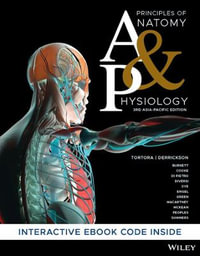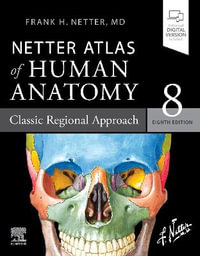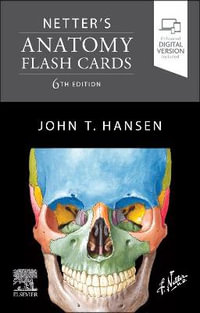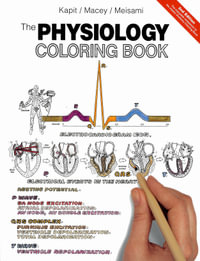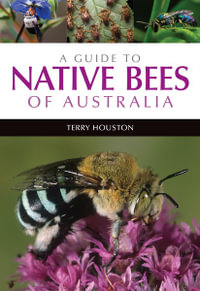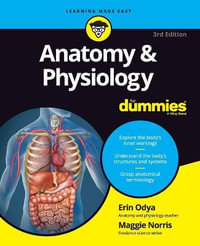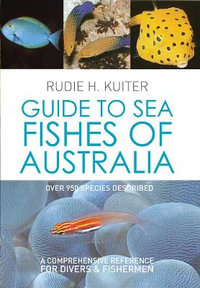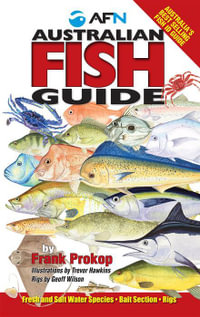
At a Glance
800 Pages
Revised
24.5 x 18.8 x 2.5
Paperback
RRP $116.95
$110.50
or 4 interest-free payments of $27.63 with
orAims to ship in 7 to 10 business days
Industry Reviews
The pedagogical aids are very good, with chapter opening
outlines, summaries and questions, etc. The colour plates are very
good, and the associated website is also quite useful. Hence, we
are taking this valuable book as additional required reading.-V.
Lakshminarayanan
"...this book certainly provides a good solid and up-to-date foundation to the subject of Evolution and one that I think students will find easy to use." Nick Colegrave, University of Edinburgh, in Genetic Research, May 2004
Acknowledgments.
Part I: Introduction.
1. The Rise Of Evolutionary Biology.
Evolution Means Change In Living Things By Descent With Modification.
Living Things Show Adaptations.
A Short History Of Evolutionary Biology.
Summary.
Further Reading.
Study And Review Questions.
2. Molecular And Mendelian Genetics.
Inheritance Is Caused By DNA Molecules, Which Are Physically Passed From Parent To Offspring.
DNA Structurally Encodes Information Used To Build The Body?s Proteins.
Information In DNA Is Decoded By Transcription And Translation.
Large Amounts Of Non-Coding DNA Exist In Some Species.
Mutational Errors May Occur During DNA Replication.
Rates Of Mutation Can Be Measured.
Diploid Organisms Inherit A Double Set Of Genes.
Genes Are Inherited In Characteristic Mendelian Ratios.
Darwin?s Theory Would Probably Not Work If There Was A Non-Mendelian Blending Mechanism Of Heredity.
Summary.
Further Reading.
Study And Review Questions.
3. The Evidence For Evolution.
We Distinguish Three Possible Theories Of The History Of Life.
On A Small Scale, Evolution Can Be Observed In Action.
Evolution Can Also Be Produced Experimentally.
Interbreeding And Phenotypic Similarity Provide Two Concepts Of Species.
Ring ?Species? Show That The Variation Within A Species Can Be Extensive Enough To Produce A New Species.
New, Reproductively Distinct Species Can Be Produced Experimentally.
Small-Scale Observations Can Be Extrapolated Over The Long Term.
Groups Of Living Things Have Homologous Similarities.
Different Homologies Are Correlated, And Can Be Hierarchically Classified.
Fossil Evidence Exists For The Transformation Of Species.
The Order Of The Main Groups In The Fossil Record Suggests They Have Evolutionary Relationships.
Summary Of The Evidence For Evolution.
Creationism Offers No Explanation Of Adaptation.
Modern ?Scientific Creationism? Is Scientifically Untenable.
Summary.
Further Reading.
Study And Review Questions.
4. Natural Selection And Variation.
In Nature, There Is A Struggle For Existence.
Natural Selection Operates If Some Conditions Are Met.
Natural Selection Explains Both Evolution And Adaptation.
Natural Selection Can Be Directional, Stabilizing, Or Disruptive.
Variation In Natural Populations Is Widespread.
Organisms In A Population Vary In Reproductive Success.
New Variation Is Generated By Mutation And Recombination.
New Variation Created By Recombination And Mutation Is Random With Respect To The Direction Of Adaptation.
Summary.
Further Reading.
Study And Review Questions.
Part II: Evolutionary Genetics.
5. The Theory Of Natural Selection.
Population Genetics Is Concerned With Genotype And Gene Frequencies.
An Elementary Population Genetic Model Has Four Main Steps.
Genotype Frequencies In The Absence Of Selection Go To The Hardy?Weinberg Equilibrium.
We Can Test, By Simple Observation, Whether Genotypes In A Population Are At The Hardy?Weinberg Equilibrium.
The Hardy?Weinberg Theorem Is Important Conceptually, Historically, In Practical Research, And In The Workings Of Theoretical Models.
The Simplest Model Of Selection Is For One Favored Allele At One Locus.
The Model Of Selection Can Be Applied To The Peppered Moth.
Pesticide Resistance In Insects Is An Example Of Natural Selection.
Fitnesses Are Important Numbers In Evolutionary Theory And Can Be Estimated By Three Main Methods.
Natural Selection Operating On A Favored Allele At A Single Locus Is Not Meant To Be A General Model Of Evolution.
A Recurrent Disadvantageous Mutation Will Evolve To A Calculable Equilibrial Frequency.
Heterozygous Advantage.
The Fitness Of A Genotype May Depend On Its Frequency.
Subdivided Populations Require Special Population Genetic Principles.
Summary.
Further Reading.
Study And Review Questions.
6. Random Events In Population Genetics.
The Frequency Of Alleles Can Change At Random Through Time In A Process Called Genetic Drift.
A Small Founder Population May Have A Non-Representative Sample Of The Ancestral Population?s Genes.
One Gene Can Be Substituted For Another By Random Drift.
Hardy?Weinberg ?Equilibrium? Assumes The Absence Of Genetic Drift.
Neutral Drift Over Time Produces A March To Homozygosity.
A Calculable Amount Of Polymorphism Will Exist In A Population Because Of Neutral Mutation.
Population Size And Effective Population Size.
Summary.
Further Reading.
Study And Review Questionss.
7. Natural Selection And Random Drift In Molecular Evolution.
Random Drift And Natural Selection Can Both Hypothetically Explain Molecular Evolution.
Rates Of Molecular Evolution And Amounts Of Genetic Variation Can Be Measured.
Rates Of Molecular Evolution Are Arguably Too Constant For A Process Controlled By Natural Selection.
The Molecular Clock Shows A Generation Time Effect.
The Nearly Neutral Theory.
Evolutionary Rate And Functional Constraint.
Conclusion And Comment: The Neutralist Paradigm Shift.
Genomic Sequences Have Led To New Ways Of Studying Molecular Evolution.
Conclusion: 35 Years Of Research On Molecular Evolution.
Summary.
Further Reading.
Study And Review Questions.
8. Two-Locus And Multilocus Population Genetics.
Mimicry In Papilio Is Controlled By More Than One Genetic Locus.
Genotypes At Different Loci In Papilio Memnon Are Coadapted.
Mimicry In Heliconius Is Controlled By More Than One Gene, But They Are Not Tightly Linked.
Two-Locus Genetics Is Concerned With Haplotype Frequencies.
Frequencies Of Haplotypes May Or May Not Be In Linkage Equilibrium.
Human HLA Genes Are A Multilocus Gene System.
Linkage Disequilibrium Can Exist For Several Reasons.
Two-Locus Models Of Natural Selection Can Be Built.
Hitch-Hiking Occurs In Two-Locus Selection Models.
Selective Sweeps Can Provide Evidence Of Selection In DNA Sequences.
Linkage Disequilibrium Can Be Advantageous, Neutral, Or Disadvantageous.
Wright Invented The Influential Concept Of An Adaptive Topography.
The Shifting Balance Theory Of Evolution.
Summary.
Further Reading.
Study And Review Questions.
9. Quantitative Genetics.
Climatic Changes Have Driven The Evolution Of Beak Size In One Of Darwin?s Finches.
Quantitative Genetics Is Concerned With Characters Controlled By Large Numbers Of Genes.
Variation Is First Divided Into Genetic And Environmental Effects.
Variance Of A Character Is Divided Into Genetic And Environmental Effects.
Relatives Have Similar Genotypes, Producing The Correlation Between Relatives.
Heritability Is The Proportion Of Phenotypic Variance That Is Additive.
A Character's Heritability Determines Its Response To Artificial Selection.
Strength Of Selection Has Been Estimated In Many Studies Of Natural Populations.
Relations Between Genotype And Phenotype May Be Non-Linear, Producing Remarkable Responses To Selection.
Stabilizing Selection Reduces The Genetic Variability Of A Character.
Characters In Natural Populations Subject To Stabilizing Selection Show Genetic Variation.
Levels Of Genetic Variation In Natural Populations Are Imperfectly Understood.
Conclusion.
Summary.
Further Reading.
Study And Review Questions.
Part III: Adaptation And Natural Selection.
10. Adaptive Explanation.
Natural Selection Is The Only Known Explanation For Adaptation.
Pluralism Is Appropriate In The Study Of Evolution, Not Of Adaptation.
Natural Selection Can In Principle Explain All Known Adaptations.
New Adaptations Evolve In Continuous Stages From Pre Existing Adaptations, But The Continuity Takes Various Forms.
Genetics Of Adaptation.
Three Main Methods Are Used To Study Adaptation.
Adaptations In Nature Are Not Perfect.
How Can We Recognize Adaptations?.
Summary.
Further Reading.
Study And Review Questions.
11. The Units Of Selection.
What Entities Benefit From The Adaptations Produced By Selection?.
Natural Selection Has Produced Adaptations That Benefit Various Levels Of Organization.
Another Sense Of ?Unit Of Selection? Is The Entity Whose Frequency Is Adjusted Directly By Natural Selection.
The Two Senses Of ?Unit Of Selection? Are Compatible; One Specifies The Entity That Generally Shows Phenotypic Adaptations, The Other The Entity Whose Frequency Is Generally Adjusted By Natural Selection.
Summary.
Further Reading.
Study And Review Questions.
12. Adaptations In Sexual Reproduction.
The Existence Of Sex Is An Outstanding, Unsolved Problem In Evolutionary Biology.
There Are Two Main Theories In Which Sex May Have A Short-Term Advantage.
Conclusion: It Is Uncertain How Sex Is Adaptive.
The Theory Of Sexual Selection Explains Many Differences Between Males And Females.
The Sex Ratio Is A Well Understood Adaptation.
Different Adaptations Are Understood In Different Levels Of Detail.
Summary.
Further Reading.
Study And Review Questions.
Part IV: Evolution And Diversity.
13. Species Concepts And Intraspecific Variation.
In Practice Species Are Recognized And Defined By Phenetic Characters.
Several Closely Related Species Concepts Exist.
Isolating Barriers.
Geographic Variation Within A Species Can Be Understood In Terms Of Population Genetic And Ecological Processes.
?Population Thinking? And ?Typological Thinking? Are Two Ways Of Thinking About Biological Diversity.
Ecological Influences On The Form Of A Species Are Shown By The Phenomenon Of Character Displacement.
Some Controversial Issues Exist Between The Phenetic, Biological, And Ecological Species Concepts.
Taxonomic Concepts May Be Nominalist Or Realist.
Conclusion.
Summary.
Further Reading.
Study And Review Questions.
14. Speciation.
How Can One Species Split Into Two Reproductively Isolated Groups Of Organisms?.
A Newly Evolving Species Could Theoretically Have An Allopatric, Parapatric, Or Sympatric Geographic Relation With Its Ancestor.
Reproductive Isolation Can Evolve As A By-Product Of Divergence In Allopatric Populations.
The Dobzhansky?Muller Theory Of Postzygotic Isolation.
An Interim Conclusion: Two Solid Generalizations About Speciation.
Reinforcement.
Some Plant Species Have Originated By Hybridization.
Speciation May Occur In Non-Allopatric Populations, Either Parapatrically Or Sympatrically.
Parapatric Speciation.
Sympatric Speciation.
The Influence Of Sexual Selection In Speciation Is One Current Trend In Research.
Identification Of Genes That Cause Reproductive Isolation Is Another Current Trend In Research.
Conclusion.
Summary.
Further Reading.
Study And Review Questions.
15. The Reconstruction Of Phylogeny.
Phylogenies Express The Ancestral Relations Between Species.
Phyogenies Are Inferred From Morphological Characters Using Cladistic Techniques.
Homologies Provide Reliable Evidence For Phylogenetic Inference, And Homoplasies Provide Unreliable Evidence.
Homologies Can Be Distinguished From Homoplasies By Several Criteria.
Derived Homologies Are More Reliable Indicators Of Phylogenetic Relations Than Are Ancestral Homologies.
The Polarity Of Character States Can Be Inferred By Several Techniques.
Some Character Conflict May Remain After Cladistic Character Analysis Is Complete.
Molecular Sequences Are Becoming Increasingly Important In Phylogenetic Inference, And They Have Distinct Properties.
Several Statistical Techniques Exist To Infer Phylogenies From Molecular Sequences.
Molecular Phylogenetics In Action.
Several Problems Have Been Encountered In Molecular Phylogenetics.
Paralogous Genes Can Be Used To Root Unrooted Trees.
Molecular Evidence Successfully Challenged Paleontological Evidence In The Analysis Of Human Phylogenetic Relations.
Unrooted Trees Can Be Inferred From Other Kinds Of Evidence, Such As Chromosomal Inversions In Hawaiian Fruitflies.
Conclusion.
Summary.
Further Reading.
Study And Review Questions.
16. Classification And Evolution.
Biologists Classify Species Into A Hierarchy Of Groups.
There Are Phenetic And Phylogenetic Principles Of Classification.
There Are Phenetic, Cladistic, And Evolutionary Schools Of Classification.
A Method Is Needed To Judge The Merit Of A School Of Classification.
Phenetic Classification Uses Distance Measures And Cluster Statistics.
Phylogenetic Classification Uses Inferred Phylogenetic Relations.
Evolutionary Classification Is A Synthesis Of Phenetic And Phylogenetic Principles.
The Principle Of Divergence Explains Why Phylogeny Is Hierarchical.
Conclusion.
Summary.
Further Reading.
Study And Review Questions.
17. Evolutionary Biogeography.
Species Have Defined Geographic Distributions.
Ecological Characteristics Of A Species Limit Its Geographic Distribution.
Geographic Distributions Are Influenced By Dispersal.
Geographic Distributions Are Influenced By Climate, Such As In The Ice Ages.
Local Adaptive Radiations Occur On Island Archipelagos.
Species Of Large Geographic Areas Tend To Be More Closely Related To Other Local Species Than To Ecologically Similar Species Elsewhere In The Globe.
Geographic Distributions Are Influenced By Vicariance Events, Some Of Which Are Caused By Plate Tectonic Movement.
The Great American Interchange.
Conclusion.
Summary.
Further Reading.
Study And Review Questions.
Part V: Macroevolution.
18. The History Of Life.
Fossils Are Remains Of Organisms From The Past And Are Preserved In Sedimentary Rocks.
Geological Time Is Divided Into A Series Of Eras, Periods, And Epochs.
The Cambrian Explosion.
Evolution Of Land Plants.
Vertebrate Evolution.
Human Evolution.
Macroevolution May Or May Not Be An Extrapolated Form Of Microevolution.
Summary.
Further Reading.
Study And Review Questions.
19. Evolutionary Genomics.
Our Expanding Knowledge Of Genome Sequences Is Making It Possible To Ask, And Answer, Questions About The Evolution Of Genomes.
The Human Genome Documents The History Of The Human Gene Set Since Early Life.
The History Of Duplications Can Be Inferred In A Genomic Sequence.
Genome Size Can Shrink By Gene Loss.
Symbiotic Mergers, And Horizontal Gene Transfer, Between Species Influence Genome Evolution.
The X/Y Sex Chromosomes Provide An Example Of Evolutionary Genomic Research At The Chromosomal Level.
Genome Sequences Can Be Used To Study The History Of Non-Coding DNA.
Conclusion.
Summary.
Further Reading.
Study And Review Questions.
20. Evolutionary Developmental Biology.
Changes In Development, And The Genes Controlling Development, Underlie Morphological Evolution.
The Theory Of Recapitulation Is A Classic Idea (Largely Discredited) About The Relation Between Development And Evolution.
Humans May Have Evolved From Ancestral Apes By Changes In Regulatory Genes.
Many Genes That Regulate Development Have Been Identified Recently.
Modern Developmental Genetic Discoveries Have Challenged And Clarified The Meaning On Homology.
The Hox Gene Complex Has Expanded At Two Points In The Evolution Of Animals.
Changes In The Embryonic Expression Of Genes Are Associated With Evolutionary Changes In Morphology.
Evolution Of Genetic Switches Enables Evolutionary Innovation, Making The System More ?Evolvable?.
Conclusion.
Summary.
Further Reading.
Study And Review Questions.
21. Rates Of Evolution.
Rates Of Evolution Can Be Expressed In ?Darwins,? As Illustrated By A Study Of Horse Evolution.
Why Do Evolutionary Rates Vary?.
The Theory Of Punctuated Equilibrium Applies The Theory Of Allopatric Speciation To Predict The Pattern Of Change In The Fossil Record.
What Is The Evidence For Punctuated Equilibrium And For Phyletic Gradualism?.
Evolutionary Rates Can Be Measured For Non-Continuous Character Changes, As Illustrated By A Study Of ?Living Fossil? Lungfish.
Taxonomic Data Can Be Used To Describe The Rate Of Evolution Of Higher Taxonomic Groups.
Conclusion.
Summary.
Further Reading.
Study And Review Questions.
22. Coevolution.
Coevolution Can Give Rise To Coadaptations Between Species.
Coadaptation Suggests, But Is Not Conclusive Evidence Of, Coevolution.
Insect?Plant Coevolution.
Coevolutionary Relations Will Often Be Diffuse.
Parasite?Host Coevolution.
Coevolution Can Proceed In An ?Arms Race?.
The Probability That A Species Will Go Extinct Is Approximately Independent Of How Long It Has Existed.
Antagonistic Coevolution Can Have Various Forms, Including The Red Queen Mode.
Both Biological And Physical Hypotheses Should Be Tested On Macroevolutionary Observations.
Summary.
Further Reading.
Study And Review Questions.
23. Extinction And Radiation.
The Number Of Species In A Taxon Increases Durings Phases Of Adaptive Radiation.
Causes And Consequences Of Extinctions Can Be Studied In The Fossil Record.
Mass Extinctions.
Distributions Of Extinction Rates May Fit A Power Law.
Changes In The Quality Of The Sedimentary Record Through Time Are Associated With Changes In The Observed Extinction Rate.
Species Selection.
One Higher Taxon May Replace Another, Because Of Chance, Environmental Change, Or Competitive Replacement.
Species Diversity May Have Increased Logistically Or Exponentially Since The Cambrian, Or It May Have Increased Little At All.
Conclusion: Biologists And Paleontologists Have Held A Range Of Views About The Importance Of Mass Extinctions In The History Of Life.
Summary.
Further Reading.
Study And Review Questions.
Glossary.
Answers To Study And Review Questions.
References.
Index
ISBN: 9781405103459
ISBN-10: 1405103450
Published: 5th September 2003
Format: Paperback
Language: English
Number of Pages: 800
Audience: College, Tertiary and University
Publisher: John Wiley & Sons (UK)
Country of Publication: GB
Edition Number: 3
Edition Type: Revised
Dimensions (cm): 24.5 x 18.8 x 2.5
Weight (kg): 1.87
Shipping
| Standard Shipping | Express Shipping | |
|---|---|---|
| Metro postcodes: | $9.99 | $14.95 |
| Regional postcodes: | $9.99 | $14.95 |
| Rural postcodes: | $9.99 | $14.95 |
How to return your order
At Booktopia, we offer hassle-free returns in accordance with our returns policy. If you wish to return an item, please get in touch with Booktopia Customer Care.
Additional postage charges may be applicable.
Defective items
If there is a problem with any of the items received for your order then the Booktopia Customer Care team is ready to assist you.
For more info please visit our Help Centre.
You Can Find This Book In

Mr and Mrs Gould: The extraordinary true story about the life of Australia's greatest naturalists and explorers, from the award winning bestselling
The extraordinary true story about the life of Australia's greatest naturalists and explorers, from the award winning bestselling author and LONGLISTED FOR THE INDIE BOOK AWARDS 2025
Hardcover
RRP $49.99
$38.75
OFF



